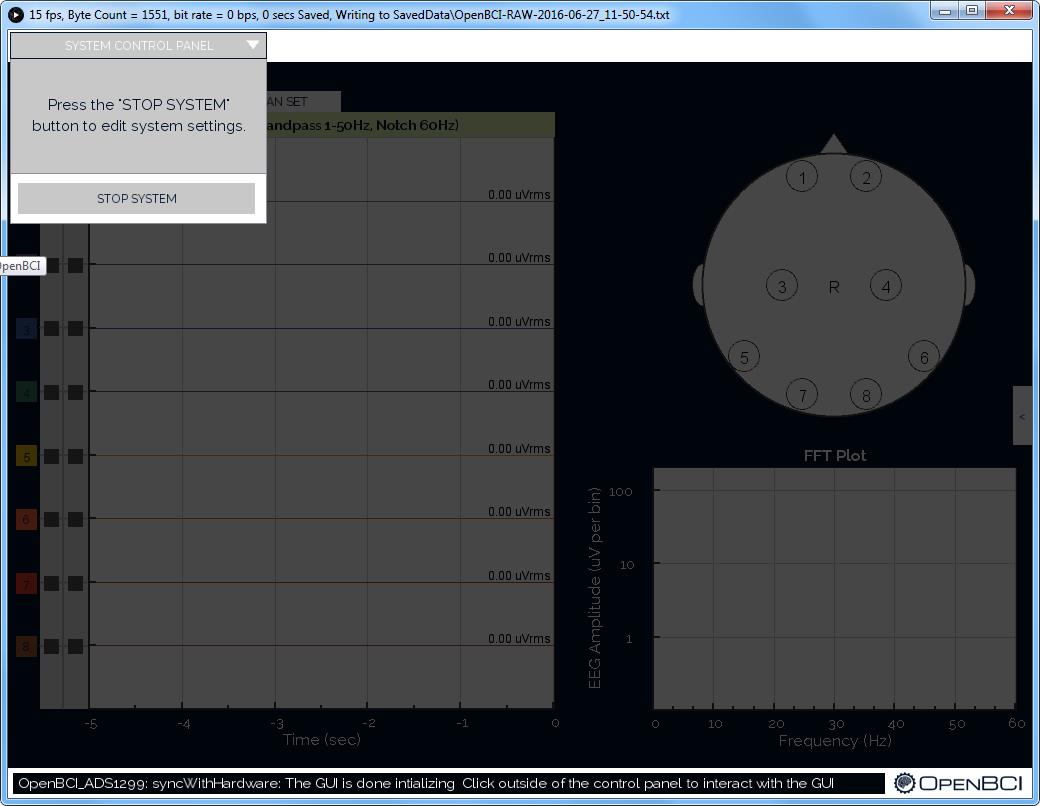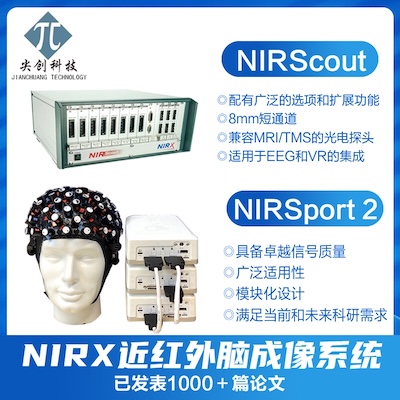Manish Saggar in our lab brought something very cool – a helmet like EEG system. He called it “dry” EEG because it does not requite gel. The design is not polished, but it’s cheap, like $800. And it does not need long wires to transmit the signal to a computer, which is pretty nice. This product is manufactured by OpenBCI, an open source community.

I decided to give it a try and borrowed the device from Manish.

The headset does not fit my head perfectly, leaving most channels in the front untouched with my head. It’s also not comfortable to wear for a long time; the material is hard and exert a lot of pressure on my head. But it’s wireless and we can collect the data and display the signal on screen in real time. This part is cool.
To collect data, we need two pieces of software and a USB dongle.

First, let’s download the dongle driver. The driver of the dongle can be found at http://www.ftdichip.com/Drivers/VCP.htm. Since I am using Windows 7, I download the Windows executable setup version. You can download the file (CDM21218_Setup.zip) directly from http://www.ftdichip.com/Drivers/CDM/CDM21218_Setup.zip. Then unzip and install it.
Then, let’s plugin the dongle into a USB. Make sure you plug it the right way. If you do, the dongle will emit blue lights. I did it wrong in the first place and have to reverse the side and try again.
We also need to download the OpenBCI software which can collect and visualize the data in real time. You can download it at http://openbci.com/index.php/downloads. I downloaded the Windows 64bit version.
Now it is time to play with it. First let’s open OpenBCI software.

The dongle acts as COM3 port on my computer, so I select COM3. I also switch my headset power on. Then I click “START SYSTEM”.

At this time I click the round “head” bring up the signal panel. Then I click “Start data stream” to collect the data. The figure below shows my brain wave in real time!

So far it’s all impressive. The setup is easy. But the question is if the signal is reliable. What we found is that it’s highly motion sensitive. If I move my head, or blink my eye, the signal will change. At this point, I hesitate to draw any conclusion on the quality of the signal.
In the past few years a number of companies have produced consumer-use brain signal recording devices. Check out this list in wikipedia. A few NIRS companies (e.g. Hitachi) are also working on a consumer NIRS device. There is no doubt that we will have a reliable personal brain sensor in the near future.


